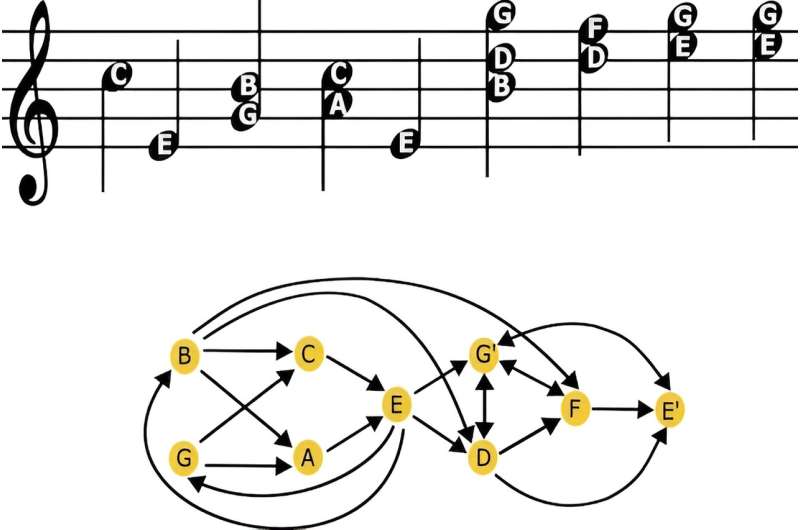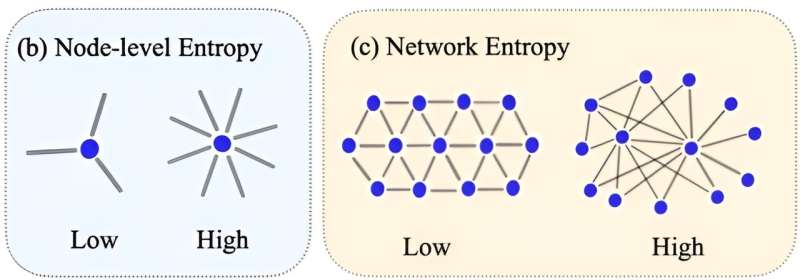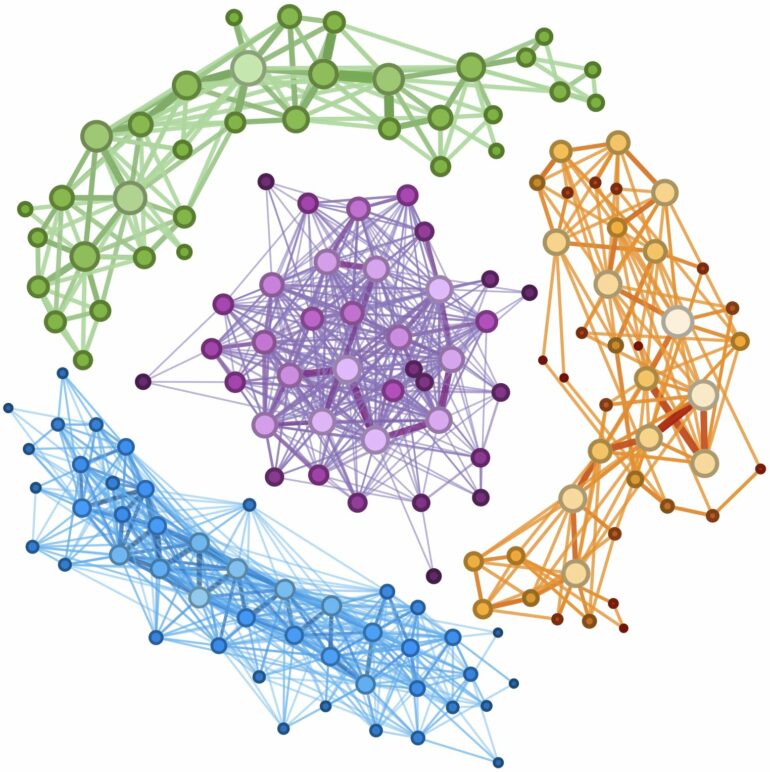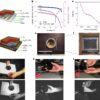Even today, centuries after he lived, Johann Sebastian Bach remains one of the world’s most popular composers. On Spotify, close to seven million people stream his music per month, and his listener count is higher than that of Mozart and even Beethoven. The Prélude to his Cello Suite No. 1 in G Major has been listened to hundreds of millions of times.
What makes Bach’s music so enduring? Music critics might point to his innovative harmonies, complex use of counterpoint and symmetrical compositions. Represent Bach’s music as a network, however, where each node stands for one musical note, and each edge the transition from one note to another, and a wholly different picture emerges.
In a recent paper in Physical Review Research, Dani S. Bassett, J. Peter Skirkanich Professor in Bioengineering and in Electrical and Systems Engineering within the School of Engineering and Applied Science, in Physics & Astronomy within the School of Arts & Sciences, and in Neurology and Psychiatry within the Perelman School of Medicine, and Suman Kulkarni, a doctoral student in Physics & Astronomy, applied network theory to Bach’s entire oeuvre.
The paper sheds new light on the unique qualities of Bach’s music and demonstrates the potential for analyzing music through the lens of networks. Such analysis could yield benefits for music therapists, musicians, composers and music producers, by giving them unprecedented quantitative insight into the structure of different musical compositions.
“This paper provides a starting point for how one can boil down these complexities in music and start with a simple representation to dig into how these pieces are structured,” says Kulkarni, the paper’s lead author. “We applied this framework to a dozen types of Bach’s compositions and were able to observe quantitative differences in how they were structured.”
In 2020, Christopher Lynn, Assistant Professor in Physics at Yale, then a doctoral student in Bassett’s Complex Systems Lab, developed a framework with Bassett for analyzing the information contained in complex networks that takes into account how humans perceive that information. In addition to posts on Facebook and work by Shakespeare, Lynn, who also co-authored the new paper, applied the framework to five pieces of classical music, including one by Bach.

Representing musical compositions as networks sheds new light on musical style. © Suman Kulkarni
“It was really interesting just to see how our model helped us to understand the structure of those pieces,” says Bassett. “From there we realized if we really wanted to say something meaningful about music more generally, you can’t use a handful of pieces. You need to use a large data set.”
Fortunately, Bach composed more than 1100 extant works, roughly a third of which Kulkarni, Bassett, Lynn and Sophia David, a Yale undergraduate and additional co-author, reinterpreted as networks of notes and the transitions between them. “We hear one note and then the next and the next and the next,” explains Bassett. “So a song is just a sequence of pieces of information.”
Two of the most crucial measures the researchers found that characterize music networks are entropy, or the level of variation in note sequences in the networks, and the degree of clustering. Networks with higher entropy, in which any given node connects to many more other nodes, contain more information, while those with lower entropy contain less information.
The degree of clustering relates the extent to which the network’s content subverts audience expectations: more clusters means the network matches expectations, while low clustering means the network deviates from expectations.
“Language networks have very high entropy,” Bassett says. “So they are very complex—they’re packing in a lot of information, but they have low divergence from our expectations. And music is sort of the opposite. It has less entropy, less complexity in general, but frequently diverges from our expectations.”
Equipped with this framework for quantifying musical structure, future research can explore the relationship between different musical structures and listeners’ brain activity.

Researchers found that entropy, or the level of variation in note sequences in the networks, meaningful described their differences. © Suman Kulkarni
“If we understand how one person responds to different levels of complexity in a piece,” Bassett points out, “that may help us guide the kinds of music that we recommend for a particular therapy.”
Composers, producers and services like Spotify might also benefit from understanding how different musical structures affect the brain.
The researchers found that Bach’s chorales have much lower entropy than his toccatas, pointing to a difference not just in style—chorales are simple and repetitive, while the toccatas have complex, chromatic passages—but also in purpose: sung in church, chorales are meant to spur meditation and adoration, while toccatas are designed for entertainment.
For her part, Kulkarni looks forward to applying this framework to additional genres and composers; soon, the researchers will follow up by analyzing jazz music in a similar fashion. “I’m very curious about non-Western music and I wonder what sorts of differences we’ll see across these different cultural traditions,” Kulkarni says.
Bassett, who once trained as a classical pianist before switching to science after suffering stress fractures in their forearms, hopes to further explore the relationship between music and language networks. “I would really like to understand what’s special and different between these two ways that we communicate with one another and impact our collective affective states,” Bassett shares.
More information:
Suman Kulkarni et al, Information content of note transitions in the music of J. S. Bach, Physical Review Research (2024). DOI: 10.1103/PhysRevResearch.6.013136
Provided by
University of Pennsylvania
Citation:
The structure of sound: Network insights into Bach’s music (2024, August 8)



